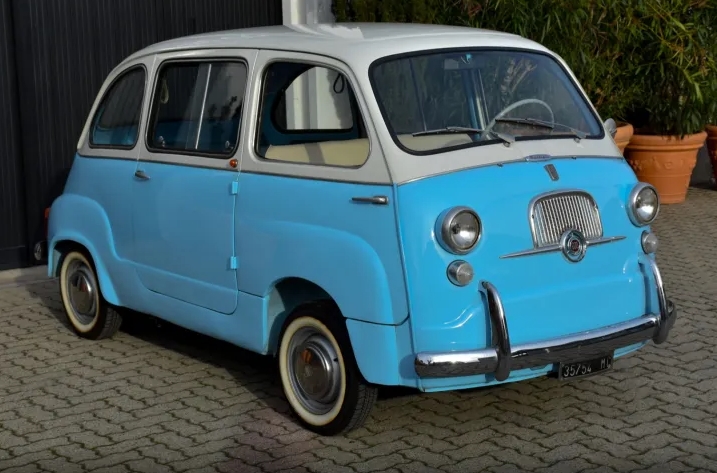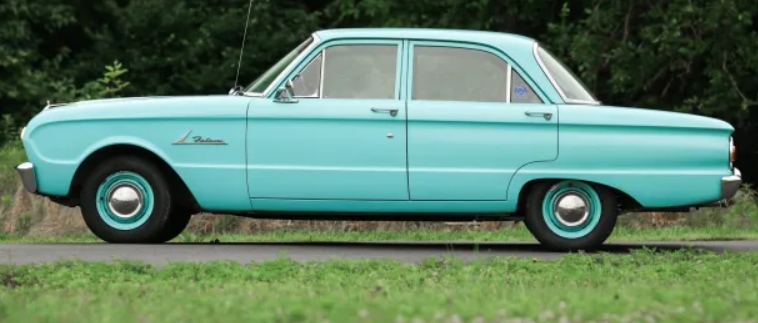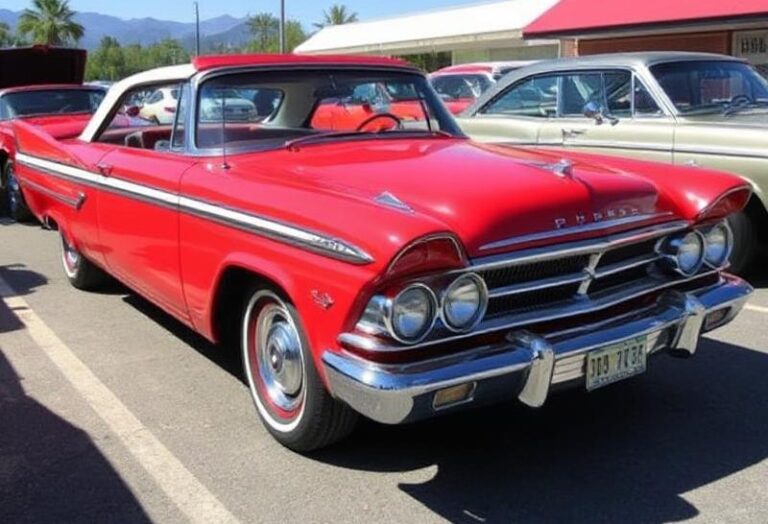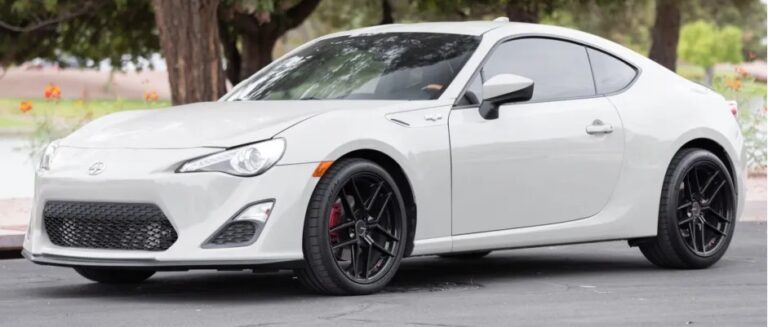The Unmistakable Oddity: A Factual Evolution of the Fiat Multipla
In the annals of automotive history, few vehicles elicit such a powerful, immediate, and polarized reaction as the Fiat Multipla. For over a decade, it was a rolling paradox—simultaneously derided as one of the ugliest cars ever conceived and lauded by critics and owners as a paragon of innovative, functional design. To dismiss it as merely a design folly is to miss the point entirely. The Multipla was a masterclass in packaging, a brave experiment in prioritizing function over form so radically that its form became its most unforgettable feature. This is the story of its evolution, from a post-war concept of practicality to a modern icon of non-conformity.
The Spiritual Predecessor: The Fiat 600 Multipla (1956-1969)
Before the infamous ‘dolphin-nosed’ car of the 1990s, there was another Multipla. In 1956, legendary Fiat engineer Dante Giacosa performed a small miracle of packaging. Taking the chassis and rear-engine layout of the diminutive Fiat 600, he pushed the driver’s cabin forward over the front axle, creating a flat-floored, one-box design. The result was the Fiat 600 Multipla, a vehicle barely 11 feet long that could miraculously seat six people in three rows.
It was, in essence, the world’s first true Multi-Purpose Vehicle (MPV). Its clever design allowed for versatile configurations; the rear seats could be folded flat to create a substantial cargo area, making it a favourite of taxi drivers, travelling salesmen, and large Italian families. While quirky in appearance, its form was dictated by its purpose. This foundational principle—maximum interior space within a minimal exterior footprint—would become the guiding philosophy for its spiritual successor four decades later.
The Iconoclast Arrives: The First Generation (1998-2004)
The automotive landscape of the late 1990s was dominated by the MPV boom, kicked off by the Renault Espace a decade earlier. Most manufacturers followed a conventional formula: a van-like silhouette with two or three rows of forward-facing seats. Fiat, however, decided to tear up the rulebook. Their brief was audacious: create a vehicle that could comfortably seat six adults and their luggage, yet be no longer than a standard family hatchback like the Fiat Bravo.
Designer Roberto Giolito and his team returned to the first principles of the 1956 Multipla but applied them with radical, late-20th-century bravado. The solution to the six-seater challenge was a unique 3+3 seating arrangement. By creating an unusually wide body (1,871 mm), they could fit three individual, full-size seats across the front and another three across the back. The central front seat could be folded down to become a table with cupholders, or removed entirely. This arrangement fostered a more social, inclusive atmosphere, allowing a child to sit safely between two parents.
This interior decision directly dictated the exterior’s controversial shape. To maintain a reasonably narrow lower body for city driving, the upper cabin was widened, creating the infamous ‘step’ or ‘muffin top’ just below the windscreen. This upper tier housed a second set of high-mounted headlights, resembling the eyes of a frog or dolphin, while the main beams sat lower in the bumper. The vast, deep windscreen and expansive side windows created an unparalleled glasshouse, offering panoramic visibility and flooding the cabin with light. The car was shockingly short, at just 3,994 mm, making it incredibly easy to park. Beneath the skin, it used a robust steel spaceframe chassis, providing excellent rigidity and crash protection.
Production began in late 1998. Its sheer weirdness earned it a place in the Museum of Modern Art’s “Different Roads” exhibition in 1999, celebrated as a triumph of industrial design. Simultaneously, the British public and motoring press, led by shows like Top Gear, gleefully awarded it the title of “Ugliest Car.” Yet, in the very same breath, Top Gear named the Multipla its “Car of the Year” for 2000, praising its unmatched practicality, cleverness, and enjoyable driving dynamics.
Models and Trim Levels (1998-2004):
The first-generation Multipla was offered with a straightforward engine and trim lineup, focused on utility and value.
Engines:
1.6 16v Petrol: A 1,581 cc inline-four producing 103 horsepower. It was adequate for city and family duties but could feel strained when the car was fully loaded.
1.9 JTD Diesel: A 1,910 cc common-rail turbodiesel, initially with 105 hp, later upgraded to 110 hp and then 115 hp. This was the star of the range, offering superb torque for effortless cruising and excellent fuel economy, making it the overwhelming choice for most buyers.
Bi-Power / G-Power: Fiat also offered factory-built versions capable of running on natural gas (CNG) alongside petrol, known as the ‘Bi-Power’ (CNG/Petrol) and later ‘G-Power’ (LPG/Petrol). These were popular in markets with gas infrastructure, like Italy, due to lower running costs.
Trim Levels:
SX: This was the entry-level model. It was functional but basic. Features included central locking, front electric windows, dual airbags, and the full 3+3 seating. Steel wheels were standard, and niceties like air conditioning were optional extras.
ELX: The higher-specification model added significant comfort and aesthetic upgrades. The ELX typically included air conditioning, alloy wheels, twin electric sunroofs, electric rear windows, body-coloured bumpers and mirrors, front fog lights, and more luxurious interior fabrics. This was the more desirable and common trim level.
The Concession to Convention: The Facelift (2004-2010)
Despite its critical acclaim and the fierce loyalty of its owners, the Multipla’s challenging aesthetics proved to be a major commercial barrier. Many potential buyers simply could not get past the looks. In an attempt to broaden its appeal, Fiat commissioned a comprehensive facelift for the 2004 model year.
The result was a profound and, for many purists, disappointing transformation. The iconic, two-tiered front end was completely erased. In its place was a conventional, inoffensive design featuring large, clear headlights and a simple grille that borrowed its styling cues from other contemporary Fiat models like the Idea and the second-generation Punto.
The rest of the car remained virtually unchanged. The distinctive side profile, the expansive glass, the high roofline, and the squared-off rear were all carried over. Crucially, the genius 3+3 interior, the flat floor, and the superb practicality were all preserved. But by removing the controversial face, Fiat had inadvertently neutered the Multipla’s very identity. It was no longer a bold statement of design purity; it had become just another anonymous, slightly awkward-looking MPV.
The facelift failed to ignite sales. Existing owners saw little reason to upgrade, and new buyers in the now-crowded MPV market often gravitated towards more stylish or established rivals like the Citroën Picasso or Vauxhall/Opel Zafira. The Multipla had lost its unique selling proposition—its audaciousness—and settled for a bland conformity that won it few new friends.
Models and Trim Levels (2004-2010):
The post-facelift lineup saw a slight reshuffling of trim names and engine updates to keep pace with emissions regulations.
Engines:
1.6 16v Petrol: The 103 hp petrol engine was carried over.
1.9 MultiJet Diesel: The JTD diesel was updated to Fiat’s more advanced MultiJet common-rail system. The primary offering was a 1.9-litre unit producing 120 hp, providing a welcome boost in performance and refinement.
Trim Levels (names varied slightly by market):
Active: This replaced the SX as the base model. Standard equipment remained functional, often including air conditioning as it became a more expected feature in the market.
Dynamic: The mid-range trim, adding features like alloy wheels, an upgraded stereo, and more convenience items.
Eleganza / Family: The top-tier trims, which included features like climate control, parking sensors, and more upscale interior appointments. These models aimed to provide a more premium family experience.
.
Many car aficionados have multiple hobbies, like boating as well as auto stuff. Those who don’t already own a boat (and even some that do), may have thought about building their own boats. It’s really not as hard as you’d think. Just take a look at these easy boat building plans!

.
Legacy and Afterlife: The End of an Era
Production of the Fiat Multipla for the European market ceased in 2010. It was quietly phased out without a direct replacement from Fiat, as the market shifted towards more stylish crossovers and seven-seat MPVs.
However, the Multipla’s story had a curious epilogue. In 2008, Fiat sold the production license and tooling for the post-facelift Multipla to the Chinese manufacturer Zotye Auto. From 2010 to 2013, it was produced and sold in China as the Zotye M300 Langyue. Zotye even developed an all-electric version, the M300 EV, giving the practical design an unexpected new lease on life as a taxi in some Chinese cities.
Today, the Fiat Multipla, particularly the first-generation model, occupies a unique place in car culture. It remains a punchline in conversations about automotive aesthetics, yet it has also cultivated a dedicated cult following. Enthusiasts and design aficionados celebrate it as a vehicle that was misunderstood in its time—a triumph of logic over vanity. For the families who owned them, they were not ugly, but brilliant: a car that was spacious, versatile, and fundamentally designed around the needs of the people inside it. Its evolution from a radical statement to a conventional appliance is a poignant lesson in the eternal automotive conflict between brave innovation and commercial reality.







